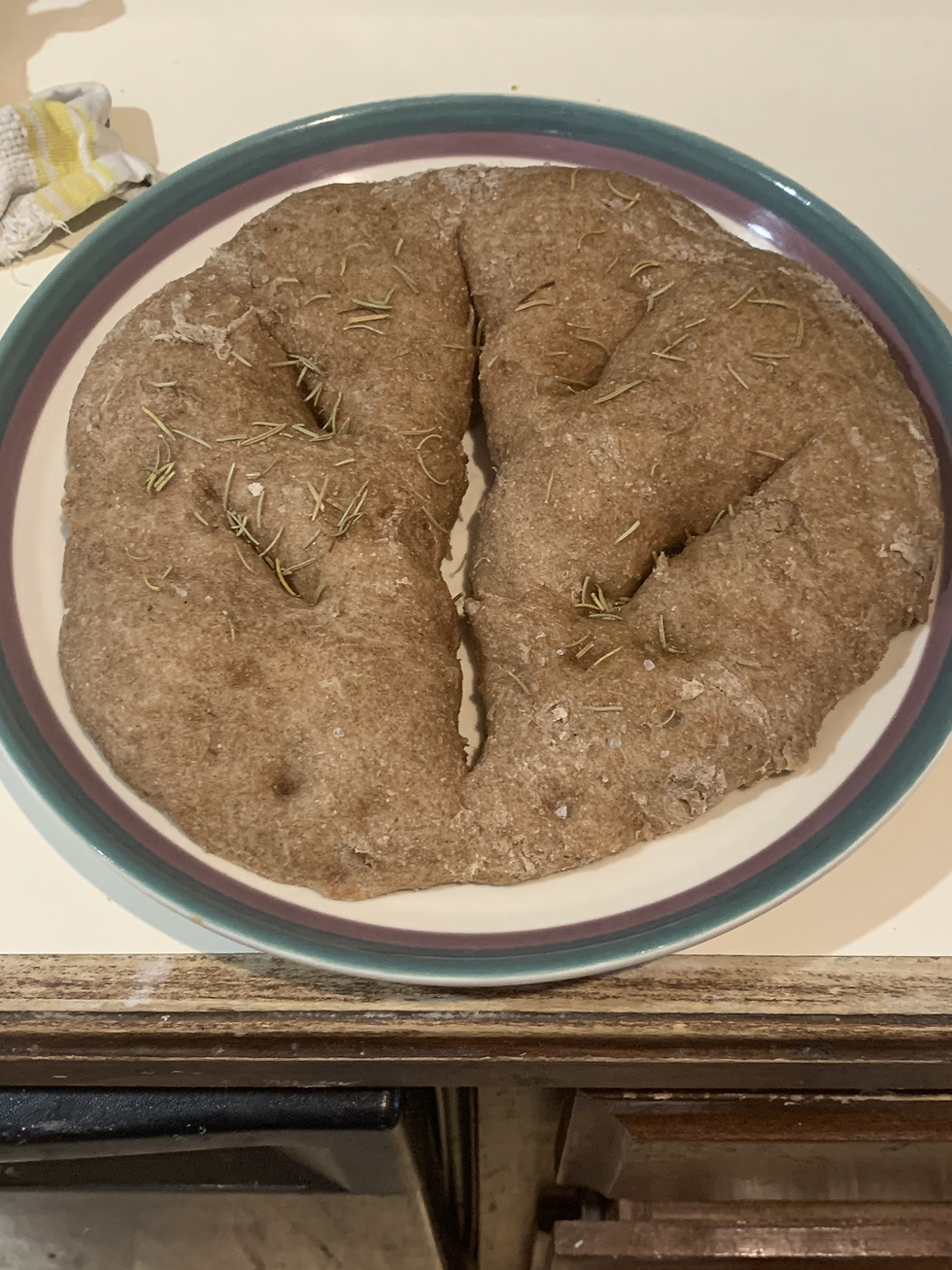A Broke Man's Buckwheat
- segroh
- Nov 30, 2020
- 2 min read
Background:
Bread made from buckwheat flour was a staple among lower class communities in northern France, particularly in places such as Brittany and Normandy. Called blé noir, or black wheat, buckwheat bread was popular among the lower class due to its accessibility and the low cost of its ingredients. However, despite being reasonably priced, the bread was notoriously bland and of poor quality. In a letter sent from Watkin Tench, a British naval prisoner of war, in 1795, he mentions that the local bread was “gritty” and had the texture of small, sandy particles. In our recreation of the bread, however, we hoped for a much more pleasant taste and texture due to the fact that our flour was store-bought, not locally ground.
Ingredients:
- 1 and 1/4 cups lukewarm water
- 1 and 1/2 teaspoons instant yeast
- 1 cup buckwheat flour
- 1 and 1/2 teaspoons salt
- 2 and 1/2 cups whole wheat flour
Instructions:
1) Combine water, yeast, and buckwheat flour into a large mixing bowl, then let rest for several minutes until visible bubbles appear on the surface.
2) Add in salt and one cup of the whole wheat flour, stirring well. Slowly add the remaining whole wheat flour to the mixture until the dough begins to separate from the side of the bowl.
3) Knead flour until thoroughly combined, then form into a loaf. Set the dough aside in a greased mixing bowl, then cover and let rest until doubled in size: this process usually takes between 1 and 1/2 to 2 hours. Preheat oven to 450 degrees toward the end of the dough's resting process.
4) Once the dough has doubled in size, place on a greased sheet tray, sprinkle a handful of oats on top (optional), then bake for 20-25 minutes.
5) Once the bread has finished baking, let cool for another 20 minutes. Slice and enjoy!

Overall, we were pleased with how our bread turned out. The crust was baked perfectly and the inside was soft, yet more dense than we had anticipated. However, we were a bit disappointed by the taste. While the texture was not as grainy as Tench described in his letter, the bread itself was thick and hard to chew, and the taste was bitter and nutty. In an attempt to improve the taste, however, we paired the bread with fruit preserves, just as many Frenchmen and women did during the Revolution. While we discovered that buckwheat bread is not the most appetizing when served alone, we now understand that when dipped in soup or covered in jam, it becomes a lot more palatable: a perfectly suitable staple item to sustain the lower class population of northern France.



Comments